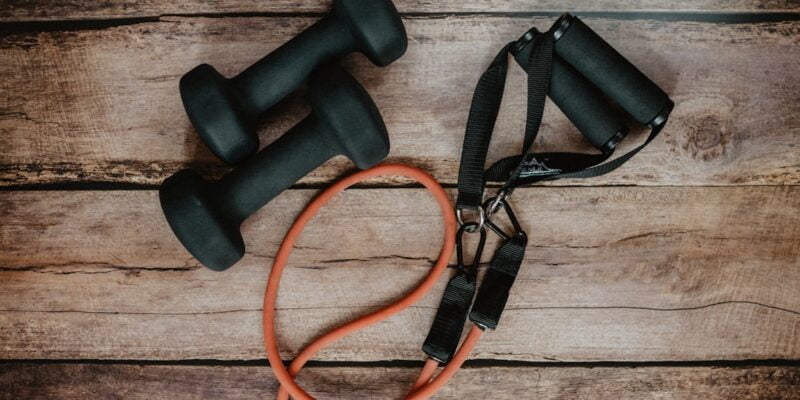
20 Morning Exercises That You Can Do At Home
Morning exercises are a great way to start your day on a positive note. Not only do they provide numerous physical benefits, but they also set the tone for the rest of your day. By engaging in morning exercises, you are jumpstarting your metabolism, increasing your energy levels, and improving your overall mood. Additionally, morning exercises can help you establish a consistent routine and make it easier to prioritize your health and fitness goals.
One of the key benefits of morning exercises is that they boost your metabolism. When you engage in physical activity in the morning, your body continues to burn calories throughout the day. This is known as the “afterburn effect” or excess post-exercise oxygen consumption (EPOC). By kickstarting your metabolism early in the day, you are setting yourself up for increased calorie burn and weight loss.
In addition to boosting your metabolism, morning exercises also increase your energy levels. When you engage in physical activity, your body releases endorphins, which are natural mood boosters. These endorphins help to improve your focus, concentration, and overall mental clarity. By starting your day with exercise, you are setting yourself up for increased productivity and success.
Key Takeaways
- Morning exercises are important for overall health and well-being.
- Warm-up exercises are essential to prepare your body for physical activity.
- Cardiovascular exercises help maintain a healthy heart and improve endurance.
- Strength training exercises build muscle and burn fat for a toned physique.
- Stretching exercises improve flexibility and prevent injury.
Warm-Up Exercises to Start Your Day Right
Before diving into any exercise routine, it is important to warm up properly. Warming up helps to prepare your body for the physical demands of exercise and reduces the risk of injury. It also increases blood flow to your muscles, which improves their flexibility and range of motion.
Some examples of warm-up exercises include:
1. Jumping Jacks: Stand with your feet together and arms by your sides. Jump up while simultaneously spreading your legs out to the sides and raising your arms above your head. Jump back to the starting position and repeat.
2. Arm Circles: Stand with your feet shoulder-width apart and extend your arms out to the sides. Make small circles with your arms, gradually increasing the size of the circles. After a few seconds, reverse the direction of the circles.
3. High Knees: Stand with your feet hip-width apart. Lift one knee up towards your chest while simultaneously hopping on the opposite foot. Alternate legs and continue hopping for a set amount of time.
Cardiovascular Exercises for a Healthy Heart
Cardiovascular exercises, also known as aerobic exercises, are essential for maintaining a healthy heart and improving overall cardiovascular fitness. These exercises increase your heart rate and breathing rate, which helps to strengthen your heart and lungs.
Some examples of cardiovascular exercises include:
1. Running: Running is a great way to get your heart pumping and burn calories. Whether you prefer running outdoors or on a treadmill, aim for at least 30 minutes of moderate to vigorous intensity running.
2. Cycling: Cycling is a low-impact exercise that is gentle on the joints but still provides a great cardiovascular workout. You can cycle outdoors or use a stationary bike at the gym or at home.
3. Swimming: Swimming is a full-body workout that is easy on the joints and provides excellent cardiovascular benefits. Whether you swim laps in a pool or take a water aerobics class, swimming is a great way to improve your cardiovascular fitness.
Strength Training Exercises to Build Muscle and Burn Fat
Strength training exercises are crucial for building muscle, increasing strength, and burning fat. These exercises help to increase your metabolism, improve bone density, and enhance overall body composition.
Some examples of strength training exercises include:
1. Squats: Squats are a compound exercise that targets multiple muscle groups, including the quadriceps, hamstrings, glutes, and core. To perform a squat, stand with your feet shoulder-width apart and lower your body down as if you were sitting back into a chair. Keep your chest lifted and your knees tracking over your toes. Push through your heels to return to the starting position.
2. Push-ups: Push-ups are a classic exercise that targets the chest, shoulders, triceps, and core. Start in a high plank position with your hands slightly wider than shoulder-width apart. Lower your body down towards the ground by bending your elbows, keeping your body in a straight line. Push back up to the starting position.
3. Deadlifts: Deadlifts are a compound exercise that targets the hamstrings, glutes, lower back, and core. To perform a deadlift, stand with your feet hip-width apart and a barbell or dumbbells in front of you. Hinge at the hips and bend your knees slightly to lower down and grab the weight with an overhand grip. Keep your back flat and lift the weight by driving through your heels and extending your hips forward.
Stretching Exercises to Improve Flexibility and Prevent Injury
Stretching exercises are often overlooked but are essential for improving flexibility, preventing injury, and enhancing overall athletic performance. Stretching helps to lengthen muscles, improve joint range of motion, and reduce muscle soreness.
Some examples of stretching exercises include:
1. Standing Forward Fold: Stand with your feet hip-width apart and slowly bend forward at the hips, reaching towards your toes. Allow your head and neck to relax. Hold this stretch for 30 seconds to 1 minute.
2. Quadriceps Stretch: Stand tall and grab one foot behind you, bringing it towards your glutes. Keep your knees close together and hold this stretch for 30 seconds on each leg.
3. Child’s Pose: Start on all fours with your knees wide apart and big toes touching. Sit back onto your heels and reach your arms forward, resting your forehead on the mat. Hold this stretch for 1-2 minutes.
Yoga Poses for Mind-Body Connection and Stress Relief
Yoga is a mind-body practice that combines physical postures, breathing exercises, and meditation to promote overall well-being. It is known for its ability to reduce stress, improve flexibility, and enhance mental clarity.
Some examples of yoga poses include:
1. Downward Facing Dog: Start on all fours with your hands shoulder-width apart and your knees hip-width apart. Lift your hips up towards the ceiling, straightening your legs and pressing your heels towards the ground. Keep your head between your arms and hold this pose for 5-10 breaths.
2. Warrior II: Stand with your feet wide apart and turn your right foot out to the side. Bend your right knee and extend your arms out to the sides, parallel to the ground. Gaze over your right fingertips and hold this pose for 5-10 breaths. Repeat on the other side.
3. Tree Pose: Stand tall with your feet together and shift your weight onto your left foot. Place the sole of your right foot on your left inner thigh or calf, avoiding the knee joint. Bring your hands to prayer position at your heart or extend them overhead. Hold this pose for 5-10 breaths and repeat on the other side.
Pilates Exercises for Core Strength and Balance
Pilates is a low-impact exercise method that focuses on core strength, flexibility, and overall body alignment. It emphasizes controlled movements and proper breathing techniques to improve posture, balance, and stability.
Some examples of Pilates exercises include:
1. Hundred: Lie on your back with your knees bent and feet flat on the floor. Lift your head, neck, and shoulders off the mat and extend your arms by your sides. Pump your arms up and down while inhaling for five counts and exhaling for five counts. Repeat for a total of ten breaths.
2. Single Leg Stretch: Lie on your back with your knees bent and feet lifted off the mat. Bring your right knee towards your chest and extend your left leg out at a 45-degree angle. Place your hands on your right shin and switch legs, bringing your left knee towards your chest and extending your right leg out. Continue alternating legs for a total of ten repetitions.
3. Plank: Start in a high plank position with your hands directly under your shoulders and your body in a straight line from head to heels. Engage your core and hold this position for 30 seconds to 1 minute.
High-Intensity Interval Training (HIIT) for a Quick and Effective Workout
High-Intensity Interval Training (HIIT) is a form of exercise that alternates between short bursts of intense activity and periods of rest or lower intensity. It is an efficient way to burn calories, improve cardiovascular fitness, and increase muscular endurance.
Some examples of HIIT exercises include:
1. Burpees: Start in a standing position, then squat down and place your hands on the ground in front of you. Jump both feet back into a high plank position, perform a push-up, then jump both feet back towards your hands. Stand up and jump explosively into the air, reaching your arms overhead. Repeat for a set amount of time.
2. Mountain Climbers: Start in a high plank position with your hands directly under your shoulders. Drive one knee towards your chest, then quickly switch legs, driving the other knee towards your chest. Continue alternating legs as quickly as possible for a set amount of time.
3. Jumping Lunges: Start in a lunge position with your right foot forward and your left foot back. Lower down into a lunge, then explosively jump up and switch legs in mid-air, landing with your left foot forward and your right foot back. Continue alternating legs for a set amount of time.
Low-Impact Exercises for Those with Joint Pain or Limited Mobility
Low-impact exercises are gentle on the joints and are suitable for individuals with joint pain or limited mobility. These exercises help to improve cardiovascular fitness, strengthen muscles, and increase flexibility without putting excessive stress on the joints.
Some examples of low-impact exercises include:
1. Walking: Walking is a simple and effective low-impact exercise that can be done anywhere. Aim for at least 30 minutes of brisk walking each day to improve cardiovascular fitness and burn calories.
2. Swimming: Swimming is a great low-impact exercise that provides a full-body workout. The buoyancy of the water reduces stress on the joints while still providing resistance for muscle strengthening.
3. Cycling: Cycling is a low-impact exercise that can be done outdoors or on a stationary bike. It helps to improve cardiovascular fitness, strengthen leg muscles, and increase joint range of motion.
Cool-Down Exercises to End Your Workout and Promote Recovery
After completing your workout, it is important to cool down properly to promote recovery and prevent muscle soreness. Cooling down helps to gradually lower your heart rate, stretch out your muscles, and return your body to its pre-exercise state.
Some examples of cool-down exercises include:
1. Walking: After completing your workout, take a few minutes to walk at a slow pace. This helps to gradually lower your heart rate and allows your body to transition from exercise mode to rest mode.
2. Static Stretches: Perform static stretches for the major muscle groups that were worked during your workout. Hold each stretch for 20-30 seconds without bouncing or forcing the stretch.
3. Foam Rolling: Foam rolling is a self-myofascial release technique that helps to release tension in the muscles and improve flexibility. Roll over tight or sore areas using a foam roller or massage ball for 1-2 minutes.
Morning exercises are a powerful tool for improving your physical and mental well-being. They provide numerous benefits, including increased metabolism, energy levels, and overall mood. By incorporating warm-up exercises, cardiovascular exercises, strength training exercises, stretching exercises, yoga poses, Pilates exercises, HIIT workouts, low-impact exercises, and cool-down exercises into your morning routine, you can set yourself up for a successful and productive day. So why wait? Start incorporating morning exercises into your daily routine and reap the countless benefits they have to offer.
Looking for more fitness inspiration? Check out this informative article on Wave Magnets’ website that provides a comprehensive guide to morning exercises you can do at home. From simple stretches to full-body workouts, these exercises are designed to help you kickstart your day with energy and vitality. Whether you’re a beginner or a seasoned fitness enthusiast, this article offers a variety of exercises suitable for all fitness levels. Don’t miss out on this valuable resource, click here to read more: https://wavemagnets.com/sample-page/
FAQs
What are morning exercises?
Morning exercises are physical activities that are performed in the morning to help improve physical fitness, boost energy levels, and promote overall health and well-being.
Why should I do morning exercises?
Morning exercises can help you start your day on a positive note, improve your mood, increase your metabolism, and enhance your overall physical and mental health.
What are some examples of morning exercises?
Some examples of morning exercises include stretching, yoga, jogging, jumping jacks, push-ups, squats, lunges, and planks.
Can I do morning exercises at home?
Yes, you can do morning exercises at home. In fact, there are many exercises that you can do at home without any equipment.
How long should I do morning exercises?
The duration of your morning exercise routine will depend on your fitness level and goals. However, it is recommended to start with a 10-15 minute routine and gradually increase the duration as you become more comfortable.
What are the benefits of doing morning exercises?
Some benefits of doing morning exercises include improved physical fitness, increased energy levels, better mood, enhanced mental clarity, and reduced stress levels.
Do I need any equipment to do morning exercises?
No, you do not need any equipment to do morning exercises. However, you may choose to use equipment such as dumbbells or resistance bands to add variety and intensity to your routine.
Can morning exercises help me lose weight?
Yes, morning exercises can help you lose weight by increasing your metabolism and burning calories. However, it is important to combine exercise with a healthy diet for optimal weight loss results.


















